MRT Jakarta Experience Evaluation — an Independent Study
We did a full day observation of MRT Jakarta, exploring all 13 stations, spent more than 12 hours in and out, went over 30 trips, and talked to more than 20 people ranging from students to businessmen.

MRT was just being introduced last March by the Government of Jakarta. My colleague, Dono Firman, and I were interested in the experience so last April 2019, we took a full day and went on a series of rides and talk to passengers to evaluate the experience.
From our perspective, MRT is definitely a huge improvement for Jakarta, a tool for Jakartans to face the fierce traffic, a storm of vehicles, if you will. I have been riding the train almost on a day to day basis afterward and I can say that aside from the long unfriendly walk, it’s pretty helpful, especially for those who live/work nearby like us.
We applaud MRT for its culture shaping
The greatest thing about MRT that we witnessed is the culture it helped to shape: helpful and approachable. We see that this is the culture that we’ve missed from the city and MRT was able to reestablish again—at least in its premise.
Since the first time we get to MRT, we were struck at how approachable, respectful, and helpful are the staffs. They are ready and would politely help you when you have confusion.
We witnessed security personnel approach and get approached to help people in purchasing tickets on the Ticket Vending Machine, provide directions and even information of which station they should disembark on.

The success of MRT in shaping this helpful and approachable culture really shines when we tried to talk to people there. Our experience doing field research, especially when intercepting, led us to believe it would be very hard to get people to stop and talk to us. We assumed that the same will happen in MRT, but our experience begs the differ: people were very approachable and helpful, which astonished us.
For us who are interested in service experience design, this is the greatest learning that we can get from MRT: shape by example; that how your customers behave are largely shaped by how you interact with them. From experiencing MRT, it comes to our realization that ambiance is not only set up by how the building or interior is designed but also from how the host/service provider interacts with you.
From the perspective of the management, we also see that this type of attitude really shine when it comes to controlling the crowd. We see that the security personnel has easier times compared to other services to establish the rules as people are more abiding and understanding. People are even willing to properly queue for lengths of time, an uncommon sight in Jakarta.
Despite the friendly and helpful staffs, we found that there are several other areas that still need improvements which gets us to the next point:
3 main issues: the walk, the ticketing, and the way-finding
We keep having problems in navigating our way throughout our experience with MRT.
As a disclaimer, we notice that each station has different standards as some would have one information/setup while the others don’t. But we’re mainly going to point out where the issues are so that it can be improved especially in stations that have yet to do so.
The walk
Getting to MRT is the first barrier. For those who walk, it can be long and daunting as the pedestrian walk is still limited. Those who are going to MRT stations might need to walk directly under sun heat, jaywalk, or even compete for space in the street with motorcycles and car. The fact that the government had tried to extend and create a proper pedestrian walk along the route is a good start, but yet to suffice.
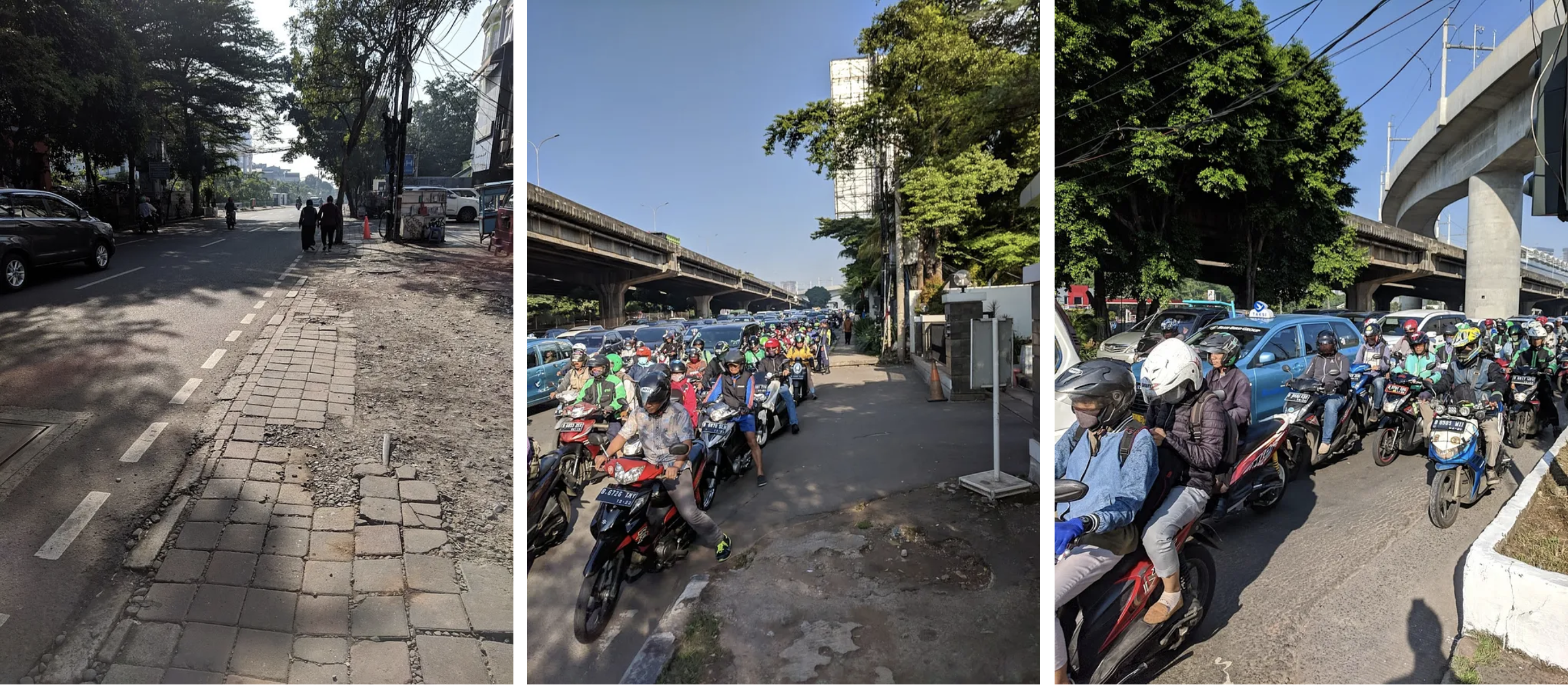
When you arrived at the station, then comes the climbing. To reach MRT, you need to go through a series of stairs and the climbing can be very steep and long, it would not even farfetched to think that MRT might actually stand for “Mendaki Ratusan Tangga” (Climbing Hundreds of Stairs). This is definitely a challenge, and we’re concerned about older people’s safety. Granted, there are some elevator and escalators available, but not always for the latter.

Not all live nearby the station, for those who did not and still willing to use MRT, they get to the nearest station by other means of transportation. The only issue is that some stations do not have a proper drop off zone which can disrupt the traffic which happened in Fatmawati Station (right image below). We see a proper one in Blok A area, but there is no clear signed that some people still drop off on the main road.

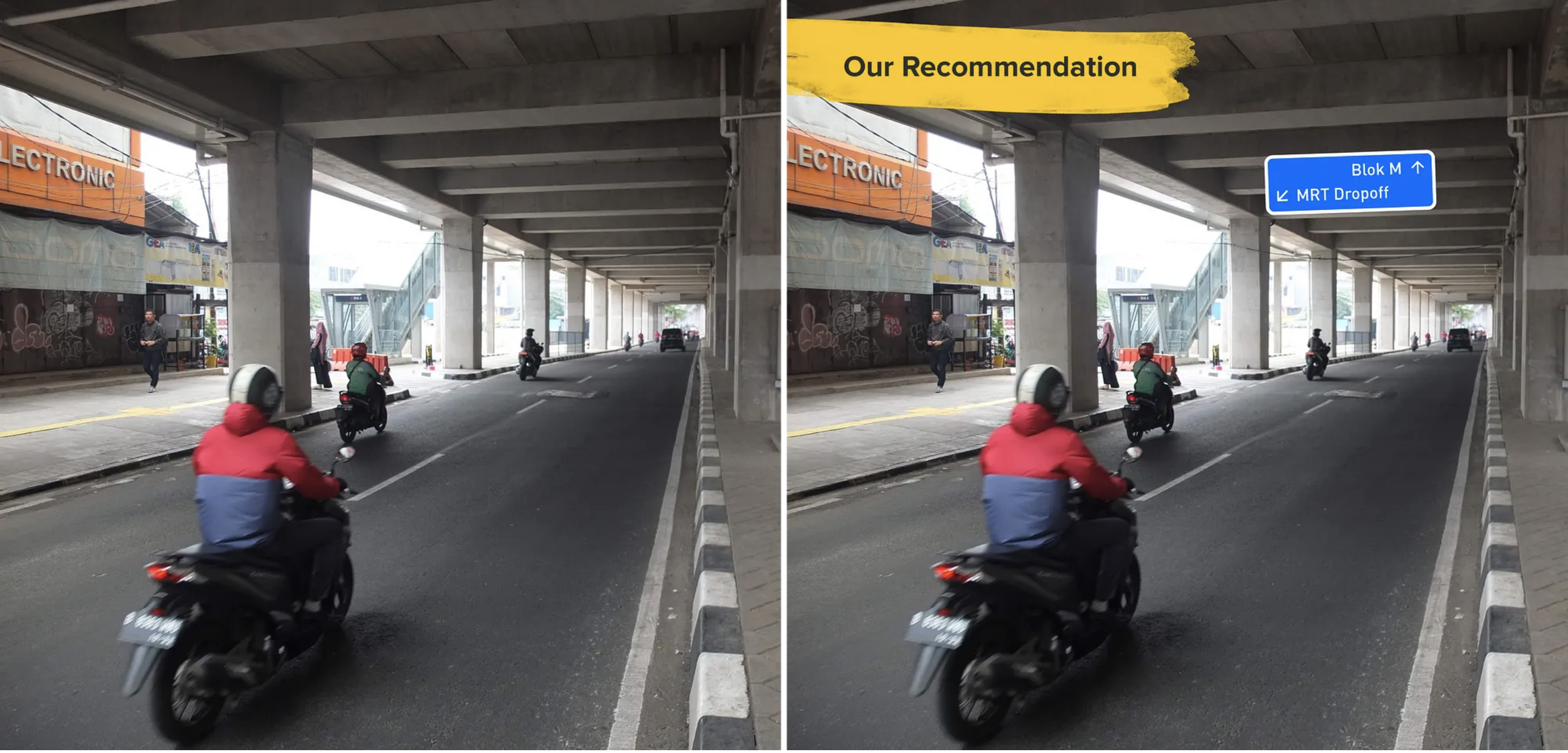
The ticketing
Once you’re in the station, the biggest hurdle for the first time is always on ticketing.
First of all, we appreciated that some station has a standing banner or poster indicating possible payment methods, but most do not have. This causes confusion and a lot of people ended up looking for an explanation from the helpful security personnel or queuing to buy a ticket despite having an acceptable payment card.

As you can see on the image above, some locket has additional information on all the acceptable payment method, which is great to help people know and avoid queueing. But we criticized it’s location as by putting it on top of the locket, it might send the wrong message: that instead of using the cards as an alternative to payment, you can use it to pay for purchasing a single pass ticket in the locket. We suggest to put them nearby the tapping area to avoid this misperception like some of the station do, and change the wording from “Kami menerima/We accept” to “Dapat digunakan sebagai tiket/Can be used as ticket”.
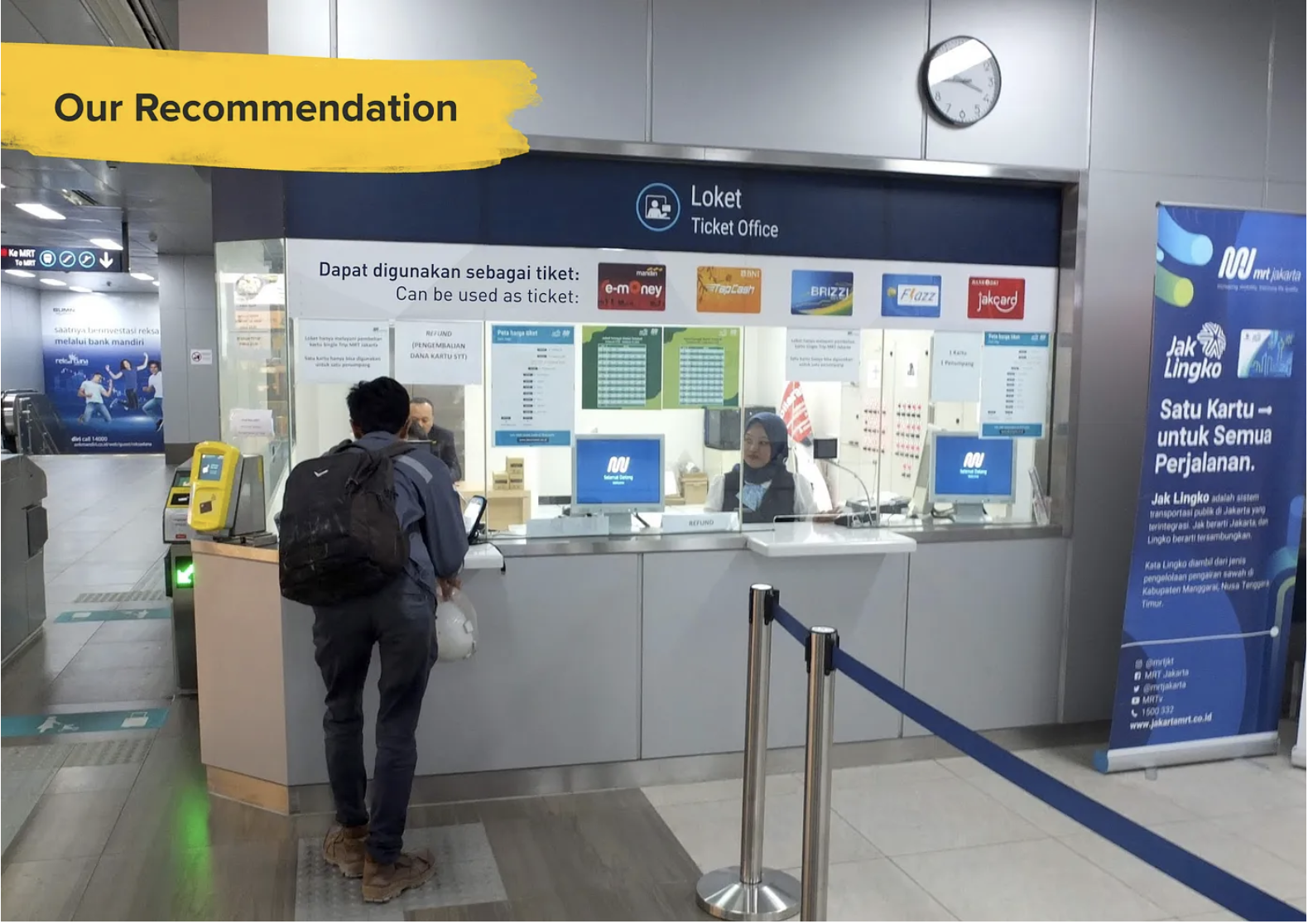
We also noticed that the queue to get the ticket can be very long, the longest one exceeds 25 people queuing in Blok M. From our calculation, it took around 45 seconds per person to purchase a ticket meaning you might need to wait more than 20 minutes to just buy a ticket. Especially for those who are in a hurry, such as businessmen, this definitely will not do.

The Ticket Vending Machine has the same issue, it’s not faster than the counter as some people are just learning how to use the machine.
We encountered people who initially tried to buy tickets from the machine but ended up going to the locket instead. When we asked, they said that they don’t have the exact money to pay and were not sure if they will get the change or that it will stay as the balance on the card.
“I only got a hundred thousand bill, I’m not sure if it’s going to give me the change so better asked the locket rather than not getting the change.”
— Guy in a group of 5, used MRT to go for lunch at Blok M.
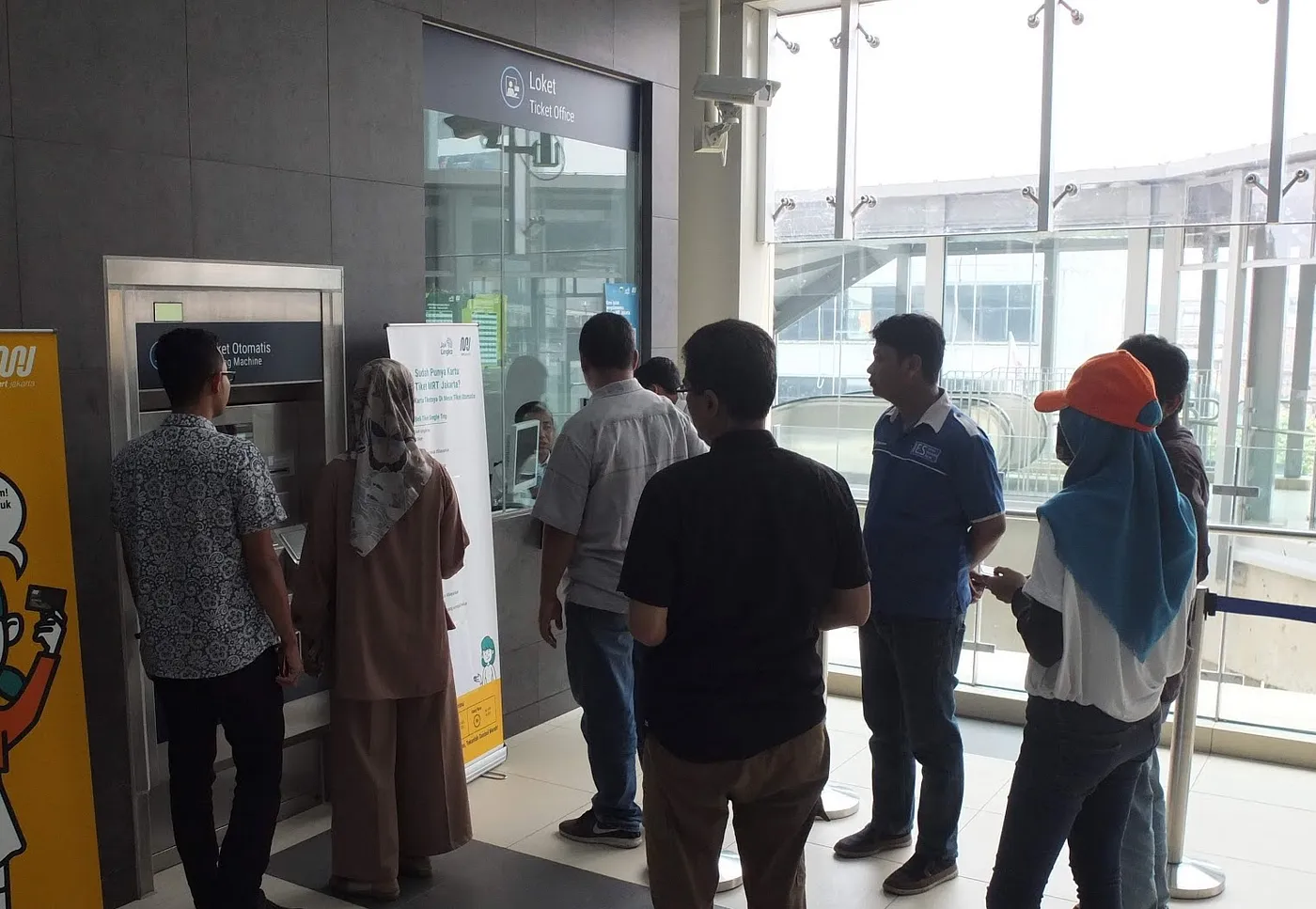
We’re also pretty confused the first time we used it, which makes our purchase longer than necessary the system ended up terminated our initial purchase and we’re needed to start over. The biggest hiccup is that we did not realize it required us to put some deposit in the card and we ended up waiting for the system to do something but nothing happened.
We understand that in the long run, the queuing issue might be gone as people would learn that using electronic money would be the best options to go with and the Ticket Vending Machine would be reserved for tourists. But in the short run, we still see the need for MRT management to provide a clearly visible acceptable payment method list nearby the gates and fix the usability concerns in the machine so that people don’t need to ask around or unnecessarily queue in front of the locket.
Another thing that we experienced is that as we moved around from station to station, we found a situation where our electronic money’s balance is no longer sufficient, that we need to top it up. But it’s difficult as there is no place to do so in the MRT so we were required to get out of the station to find the nearest ATM. Before getting out, we do get the chance to ask the information staff and she said you will soon be able to top-up your electronic money in the locket, so look out for it.
The way-finding
This is the main issue when you’re using MRT; especially on your first trips.
Despite us have been using them multiple times in the day, revisiting stations and all, we still found ourselves can hardly navigate on where we should go. We also noticed that people were facing the same issues in navigating around the station.
While we were on Blok M station, we saw a person stopped on his way, right after tapping the ticket. We noticed that he was contemplating on which stairs to take: is it the left or the right one? He looked around a couple of times and then blindly chose the stairs on the right simply because it’s closer to him. Seconds later, we saw him climbing down the stairs and took the stairs on the left.
We were intrigued, so approached him and asked what just had happened. He explained that the first stairs (the right side) he took was leading to the wrong train direction so he climbed down again and took the left side. He was confused as there was no signage or direction that tell him which way to go.


Once people are in the platform, there’s not much of an issue except for the waiting. Some people that we talked to are businessmen who valued their time, so their main concern is the 10 minutes wait between the trains. They mostly understood that it’s due to the currently low utilization number, but he still wished that at least the train can be in 5 minutes increments.
“10 minutes wait is too long. Well, for more than 2 stations that’s make sense, but [for 2 or less] I can just walk or use a taxi and save some time! … It [MRT compared to taxi] is cheaper, but IDR 2,500 vs IDR 15,000 is not much of a difference.”
— Business guy who needs to wait for the next train, use MRT to go for a meeting with a client
On the 12 hours venturing the MRT, we found some people took off on the wrong station. We talked to two of them.
The first one gets off later as she dozed off on the station and did not realize that she already skipped her station. She‘s a student who used to go by bus to her campus where she usually used an alarm so that even if she dozed off, she can still get off on time. But this time, as she used MRT, she did not prepare the alarm as she has yet to know how long it takes to get from a station to station and ended up missing the station.
“I usually setup an alarm on my phone so that I can sleep [when riding the bus] but because this is quick, I did not set it up, but then I dozed off and realized the door is already closed on my destination station.”
— Girl who exit late, used MRT to go to her campus.
The second one gets off too soon, he was worried that he might skip his station that he gets off right away. He felt that it’s better to get off sooner than later as he felt more comfortable getting off earlier and wait for the next train than later and needed to switch platform to go back to the right station.
We recommend MRT to show the estimated arrival time to a station so that people know how long it would take to their destination station.
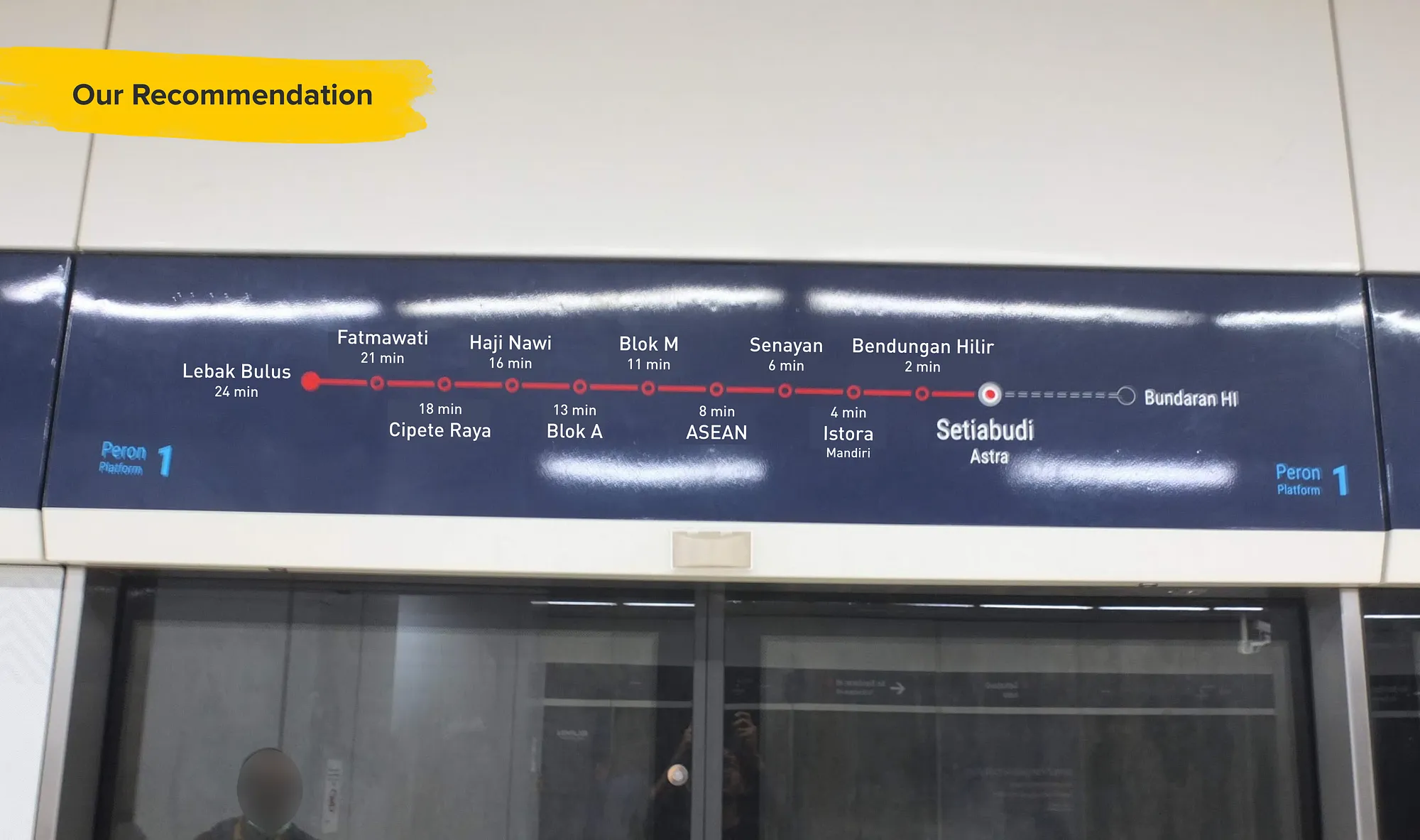
Another idea that we came up is to create a tune for each station to make it easier for people to be aware of where they should drop off. You know that moment where you know the tunes but cannot recall the lyrics? It’s because of tunes are easier to grasp than just words.
Based on research, this is because when processing music, we use the part of the brain that evokes emotions. Because of the emotional response elicited from a piece of music, the associated memory tends to be strong. If there were tunes attached to each station, the audio will serve as a reminder, an audio stamp, so that she would be more aware of which station the train is approaching.
We’re also thinking that these tunes can be a fun gimmick to illustrate the destination areas. For example, Senayan can have a very sporty theme song, or Monas can have a very patriotic theme song:
As you might have realized from the video, we also rewrote the script for the announcement. The current announcement emphasizes too much on the end station information instead of the next station which is less important. We also think that the current one announces the next station way too close to the station that it does not allow people to prepare earlier.
Once arrived at the right station, the next important thing to do is to find the right exit.
In general, there are 4 exit points in each MRT station (2 on each side of the road). Hence it would be cumbersome if we find ourselves on the wrong exit point. To avoid that, MRT has given the code for each of the exits, which are exit A, B, C and D so that people will know where to go.
Unfortunately, these coded exits were not that visible and easily understood. The signage leading to those exits were not guiding people from the moment they go out from the train until they left the station. We observed that people were confused about which direction they should take and eventually they asked the security guard for direction.
In addition, we saw that MRT has developed a map of these exits, while we considered this as a good effort, we found that the map was not easy to read and digest as we were having the struggle to correlate which landmarks to which sections.
TLDR;
Here’s what we found from the research:
- We applaud that MRT has successfully created a culture in its premise, making it a very friendly place and in return allowed them to easily control the crowd.
- We noticed that not all MRT stations are the same, they each have different information/setup available on their premise, so one station can have an overall better experience than another.
- The government still needs to improve the vicinity facilities so that getting to MRT is more comfortable.
- MRT should make acceptable payment method information available on all stations so that people don’t need to queue or ask at the locket.
- Some people are getting off at the wrong station. Adding estimated travel time and station theme song would help people avoid it.
- Improve overall signage visibility so that they can easily navigate in and out of the station.